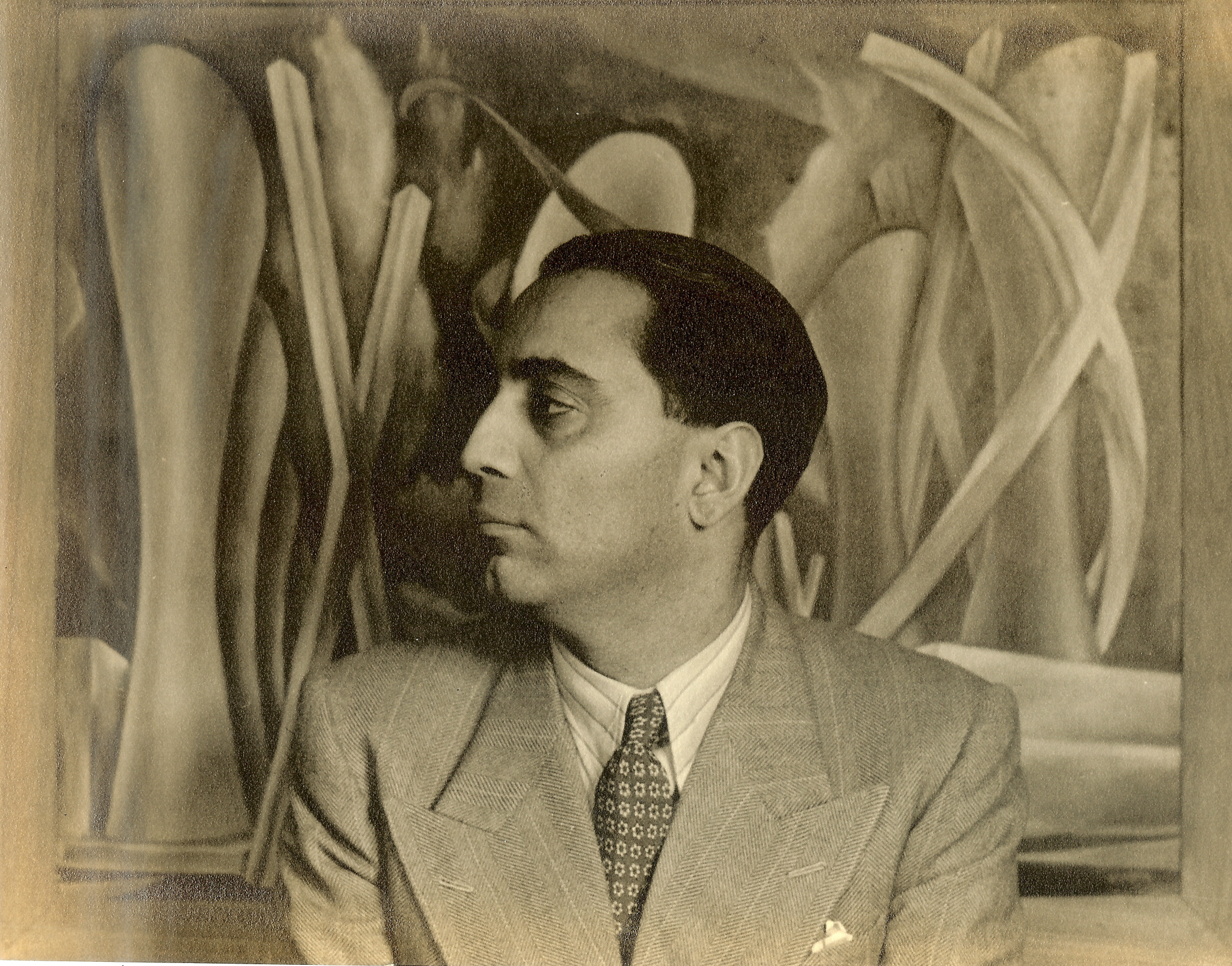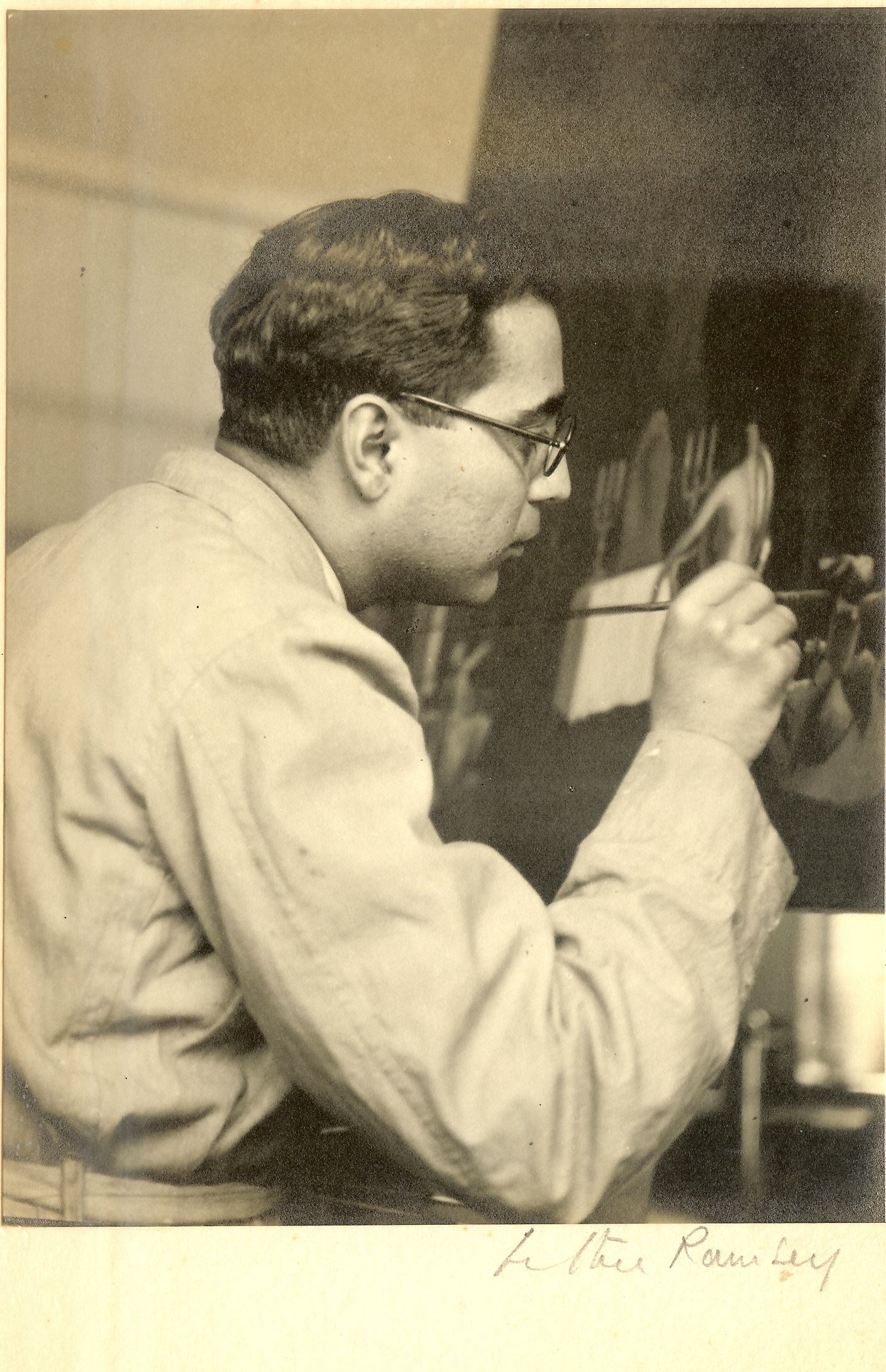Archive
Homi Jehangir Bhabha
- Homi
- Jehangir
- Bhabha
Homi Bhabha
- 30-10-1909
- Mumbai (IN)
- 24-01-1966
- Montblanc (FR)
- ScientistCollectorArtist
Homi Jehangir Bhabha was a world class scientist, institution builder, an artist and art connoisseur. His vision for growth of science and art has had significant impact in post-colonial India.
Word Count: 30

Homi Bhabha in front of one of his paintings, Photo: Lettice Ramsey, n.d. (Courtesy of Stephen Burch, All Right Reserved). 
Homi Bhabha, working on his painting inspired by the Countess’ Aria Dovo Sono i belli moment' from Mozart's opera The Marriage of Figaro, Photo: Lettice Ramsey, n.d. (Courtesy of Stephen Burch, All Right Reserved). Anand, Mulk Raj. “In Memoriam.” Marg, vol. 19, no. 2, March 1966, p. i−iii.
Chowdhury, Indira, and Ananya Dasgupta. A Masterful Spirit: Homi J. Bhabha 1909–1966. Penguin Books, 2010.
Dasgupta, Ananya. “Homi Jehangir Bhabha, the Renaissance Man.” Asia Pacific Mathematics Newsletter, vol. 1, no. 4, October 2011, https://asiapacific-mathnews.com/01/0104/0012_0015.html. Accessed 27 April 2021.
Leyden, R. V. “Dr Homi Bhabha and the World of Art.” Homi Bhabha as Artist; a selection of his paintings, drawings, and sketches, edited by Jamshed Bhabha, Marg Publications, 1968, p. 18.
Word Count: 76
TIFR Archives, Mumbai.
Word Count: 3
12 Little Gibbs Road, Malabar Hills, Bombay (now Mumbai) (residence).
- Bombay
- Ananya Dasgupta. "Homi Jehangir Bhabha." METROMOD Archive, 2021, https://archive.metromod.net/viewer.p/69/2951/object/5138-12032655, last modified: 15-09-2021.
-
Minnette De SilvaArchitectJournalistBombay
Probably the first Sri Lankan woman architect and a founding member of Marg, Minnette De Silva mediated between tradition and modernity while defying the boundaries of gender, caste and disciplines.
Word Count: 30
Marg. A Magazine of Architecture and ArtMagazineBombayLocal and exiled creatives formed the Modern Architectural Research Group to publish a progressive journal of art and architecture in Bombay from 1946 onwards.
Word Count: 23
Open Studio Evenings by Käthe and Walter LanghammerSalonBombayThe painter Walter Langhammer and his wife Käthe built an informal infrastructure to promote local avant-garde artists and regularly invited them to Open Studio Evenings at their studio.
Word Count: 29
ChemouldGalleryFrame ShopBombayChemould’s history stretches from its beginnings as a manufacturer of chemical mouldings and frames in 1941 over to a hub for art circulation displaying a variety of artists in Bombay.
Word Count: 30
TIFRUniversity / Higher Education Institute / Research InstituteBombayThe TIFR is one of India’s premier scientific institutions. Inside its buildings, scientists ponder over path-breaking ideas. Also, within its hallowed walls is a fine collection of modern Indian art.
Word Count: 31
Mulk Raj AnandWriterPhilosopherArt PatronCultural CriticBombayAs a global socialist and modernist, Mulk Raj Anand sought and shaped opportunities for intellectual exchanges between Asia and Europe.
Word Count: 20
Rudolf von LeydenGeologistAdvertisement SpecialistJournalistArt CriticArt CollectorCartoonistBombayThe advertisement expert, Rudolf von Leyden, became a major art critic and art historian in Bombay in the 1940s, advocating an urgent need for modernism in art in post-colonial India.
Word Count: 30